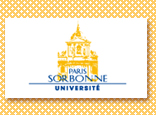 In
the 18th c. technology, science and industry interacted. In
the 18th c. technology, science and industry interacted.
The major discovery of the period is
that steam power could be harnessed and applied to industrial
processes; so far the only known sources of power, in
addition to human or animal power, were the wind and the
water (windmills and watermills). It had been known since
Antiquity that the sun striking water through glass produces
steam which can move automata, but this phenomenon was
used only for recreational purposes.
In the early 18th. c, pistons moved by steam were used
by Newcomen as an aid to pumping in mines.
James Watt developed a steam engine which could produce
a rotary motion.
It was used in
the 1770s and 80s in metal works, and in the textile industry
of the Midlands (where the word "mill" was still
used for factories, long after they had ceased to be powered
by watermills).
 Science
history may be studied in the websites of science museums
or of science departments. Science
history may be studied in the websites of science museums
or of science departments. |
|
|
1)
Internet search for a proper
name: in a search engine, search for "James
Watt" placed between quotation marks. It will retrieve
only the websites where the phrase appears as such; this
method could be used as well for institutions (eg. "Royal
Society").
It differs from Boolean searching since using a Boolean
query (James AND Watt) will retrieve websites where the
two words are not necessarily close together, possibly
referring to people named Watt and to other people named
James.
Simulation:
the website shows the use of digital animation simulating
the movement of the engine |
|
|
|



